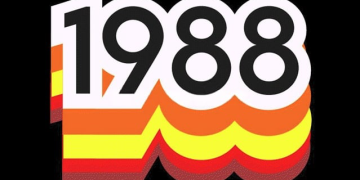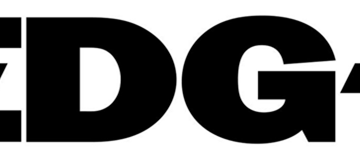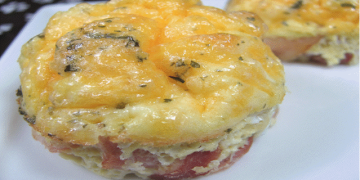2025-07-13 12:59:00
bleuje.com
Algorithms for making interesting organic simulations
The purpose of this article is to explain techiques that enabled me to make simulations like the one
below, along with a lot of other organic looking things. We will focus on algorithmic techniques for
artistic purpose
rather than scientific meaning.
1. Physarum algorithm from Jeff Jones (2010)
Jeff Jones presented a simulation algorithm that reproduces the behavior of organisms such
as Physarum polycephalum.
It is explained in this
paper.
Results typically look like this: (source: screenshots from implementation by Amanda
Ghassaei)
General principle
The basic idea is that particles (also called agents) move around, leaving a trail behind them and trying
to follow the trails
they detect.
Below is an interactive explanation of a single agent, without representing the trail update.
Please don’t mind the glitch after slider change 🙂
Detailed description of the algorithm
A large number of agents move in a 2D space.
At each iteration of the algorithm, agents deposit trail on an
image called a trail map, just by adding a value to a pixel of the image. In the above
illustration, each cell represents a pixel of the trail map image.
Agent attributes:
- 2D position (x,y)
- orientation: an angle called heading
Here are the different steps for an iteration of the algorithm:
1. Sensing:
- Each agent “looks” at three places: straight ahead, slightly right, and slightly
left. sometimes not so slightly - The distance from the agent to the 3 sensor places is defined by the parameter Sensor
Distance (SD). - The side angle is a parameter called Sensor Angle (SA).
- The agent detects the trail intensity at those three positions/pixels.
2. Rotation and movement:
- If the highest value is to the left or right, the agent turns in that direction.
- The turn angle is controlled by the parameter Rotation Angle (RA).
- If the highest value is straight ahead, the agent doesn’t rotate.
- Actually in the case where straight ahead is the lowest value, the agent makes a random choice
between left and right. - After potentially turning, the agent moves forward by a distance called Move Distance
(MD).
3. Deposit: the agents add a value to the trail map at their new position.
4. Trail diffusion and decay:
At each iteration, after deposit of all agents, the trail is slightly diffused (a sort of blur effect on
the image), and multiplied by a decay factor (for example 0.75) to
keep things stable. A more precise
explanation will be given later. Although the trail is a 2D
image,
artistically it’s often better not to display it directly, and instead only show the
particles.
By modifying the four main parameters (SD, SA, RA, MD), various simulated behaviors can be observed.
The algorithm from Jeff Jones can have more complex features than this but I’m giving a simple version
that’s used for what is described next in this article.
Real interactive implementation with few agents.
The simulation below implements the algorithm, there are just too few particles and too few pixels for
cool
structures to appear!
You can check out this
very nice webpage by Amanda Ghassaei, to see the simulation with a lot of particles and with
controllable sliders.
Another explanation/review of this algorithm from Jeff Jones can be found here. It has a pretty drawing to sum up
the algorithm.
Show explanation image by Sage Jenson

2. 36 Points by Sage Jenson (2019-2022)
A more complex version of the previous algorithm can be found in the work 36 Points by Sage Jenson, which
displays amazing varied behaviours. Press letters or digits of your keyboard to
change the Point. 26 letters + 10 digits = 36
It uses a single algorithm and each Point represents different parameters, which result
in different behaviours.
A Point corresponds to a behaviour obtained with 20 parameters (so mathematically this project shows 36
points of ℝ²⁰).
The above images show 6 Points. (found there)
Main idea
Looking at the code we can understand some clever ideas. The most important one is to make the parameters
of the classic algorithm different depending on the value \( x \) of the trail map at
the particle’s position.
The formulas below are used:
$$
\begin{eqnarray}
\text{sensor distance} &=& p_1 + p_2 \cdot x^{p_3} \nonumber \\
\text{sensor angle} &=& p_4 + p_5 \cdot x^{p_6} \nonumber \\
\text{rotation angle} &=& p_7 + p_8 \cdot x^{p_9} \nonumber \\
\text{move distance} &=& p_{10} + p_{11} \cdot x^{p_{12}}
\end{eqnarray}
$$
For each iteration, we first get the value \( x \) of the trail map at the particle’s
position,
and then with the previous formulas we just do the same as the previous classic algorithm. That gives us
12
parameters to play with instead of 4.
Below is an update of the animated explanation with a single agent. This is using fixed parameters.
I think adding interactive sliders to control the 12 parameters wouldn’t add much value for the
explanation.
Other idea
There are 2 other parameters that are important to use: two offsets to rather get \( x
\)
near the particle position.
The first one is an absolute vertical offset \( p_{13} \) (“absolute” meaning the
heading of the particle
doesn’t matter). The second one, \( p_{14} \), is an offset relatively to the
particle’s heading (getting \( x \) ahead of the particle),
A piece of code for that part can look like this:
Respawn
Another thing in 36 Points is that in addition to position and heading attributes, there is a
progress attribute so that each particle periodically respawns at a random position.
Other comments
Simply by using variations of the 14 parameters that were previously described, very different and
interesting behaviours can be obtained. At this point maybe we should not call the results “physarum
simulations”, but rather “speculative biology” as Sage seems to state.
I haven’t used the 6 other parameters from 36 Points: for example the decay factor is one of
them (I use a fixed value to 0.75).
Sage’s piece of code (link) that
implements the particle update with these techniques
has the following license:
License Creative Commons Attribution-NonCommercial-ShareAlike 3.0 Unported License
3. Bleuje implementation
You can find my implementation of the previous algorithm on github: physarum-36p
Although I use the techniques described in the previous part that come from 36 Points, my
implementation is different, and because of that I added a 15th parameter to make some points of 36
Points work. It’s simply some rescaling factor for the sensed \( x \). A lot of points from
36 Points don’t work at all with my implementation, and those that work mostly give different
behaviours. I also added new points.
Below is a video showing what this implementation produces for 22 different Points (each one having 15
parameters).
Below is a description of what the code is doing.
Real-time setup
In order to have real-time fast computation, we can use shaders to compute the algorithm on the GPU. I’m
using compute shaders and openFrameworks to manage them and the interface. The particles updates are
done in parallel, same for the trail map updates in other shaders. It can run smoothly with millions of
particles.
There are 4 shaders:
- A shader that just resets counters to zero.
- Particle update/move, incrementing counter on new pixel postion.
- Trail deposit from counter, and pretty image production.
- Diffusion + decay on trail map.
Diffusion and decay algorithm
The diffusion is using a 3×3 cells kernel, as explained in the code below.
Show code for diffusion and decay step
The implementation is actually a bit different because we “loop” the image at the borders. (link
to actual code)
Deposit on trail map
There is a counter of particles on each pixel of the trail map. The counters are set to 0 at the
beginning ot
each iteration of the algorithm. After they move, the particles increment the counter at their position,
which can be done in parallel thanks to the atomicAdd function in glsl.
To update the trail map, we add \( \sqrt{k} \times f \) to the trail map image, where \( k \) is the
particles count at the pixel and \( f \) some constant deposit factor. This part is a personal idea, I
find that
it works quite well. I also limit the count to a maximum value.
Here is simplified code for that part. (link
to actual code)
Show GLSL code piece for particle deposit step
Important differences compared to 36 Points
The trail map in 36 Points works differently compared to what I described. If I understand
correctly, in 36 Points particles are like transparent dots that are added on the trail map
image. It results that the
trail map doesn’t have values larger than the opaque value 1.
In my implementation there is no such limit on trail map values, so when getting the value \( x \) we
clamp it to avoid a value larger than 1: \( x = \min(x,1) \).
Another difference is that trail map sensing can be done either at the nearest pixel or using continuous
sampling. Unlike 36 Points, in this implementation I do it on nearest pixel as
shown in the animated illustration.
Remarks about sensing on image
I realized/remembered this implementation difference after writing the article. After testing
the difference, it feels like the continuous sampling doesn’t necessarily give more interesting
results. But you should do it if you want to imitate 36 Points.
Here are some GLSL snippets for sensing, depending on the method you choose. By the way, wrapping
is implemented here.
Show GLSL code for nearest pixel sampling
Show GLSL code for continuous sampling (interpolating between pixels)
For continuous sampling we could also use the texture function in GLSL like Sage, though that
requires setup changes in my implementation.
Move shader
With the previous explanations we can give simplified code for the particle move and update.
Show GLSL code piece for particle update/move (the most important code)
Displayed image
To get the image to display, the particles count on a pixel can be mapped to brightness in [0,1], non
linearly. The deposit shader does it at the same time as doing the deposit on trail map.
Some screenshots to end this section:
4. Color experiments
A natural thing to do to obtain more colorful simulations is to map the counter of particles on a pixel
to a color gradient, typically from black to white with various colors in between.
I experimented with something more complex. The trail map image has two channels: one is the classic
trail map, the other one is the trail map with a delay. When determining the color of a pixel, we check
for the difference between trail map and delayed trail map at this pixel. The difference interpolates
the previous color (with a gradient) towards white or another gradient. With that technique, areas where
there is more change can have different colors. The interpolation amount can also be different with
distance from the center.
5. Weird velocity effect experiment
At some point I wanted to experiment with adding velocity attributes to particles, so that they have some
kind of inertia.
I don’t remember how, but with my experiments I arrived at a technique that can produce smooth and
intricate results. It’s described in the code below.
Show GLSL code piece for weird effect
In the videos below, after 3 seconds the effect is activated.
6. Playful interaction ideas, points mixing
I’ve been making a playful version of these algorithms. The main idea is that there is a cursor that the
user controls, through mouse or joystick, and different Points are spatially mixed.
At the
center of the cursor the simulation parameters use the first Point and far from cursor it’s the second
one. In the area in between, interpolation is done to get parameters. The interpolation parameter is
defined with a gaussian function, and the size of the cursor is a standard deviation \( \sigma \). Let’s
call \( \mathbf{P} \) the particle position, and \( \mathbf{C} \) the cursor position. I also use the
word pen instead of
cursor.
$$t = \exp\left( -\frac{\|\mathbf{P} – \mathbf{C}\|^2}{\sigma^2} \right)$$
$$\text{param} = (1-t) \times \text{BackgroundPoint.param} + t \times \text{CursorPoint.param} $$
We do this for all Point parameters of the simulation.
The user can control pen size and navigate through Point choices.
Spawning action
The user can spawn particles at some positions: the desired spawn position is given as uniform to the
move
shader, and each particle has a small probability of going to that location. So the spawning
doesn’t actually add new particles.
My big interactive physarum project
I open sourced the project where all of this and more features are implemented, it can be used as
playful artistic installation with one or two players using gamepads. Link:
Interactive physarum repository
7. Other experiments
The algorithm has enough elements to allow for a lot of room for experimentation.
Example 1
Here is an example where the heading of the particle is used to interpolate parameters between two
Points.
$$t = 0.5 + 0.5 \times \sin(\text{heading} + f(x,y,\text{time}))$$
$$\text{param} = (1-t) \times \text{Point1.param} + t \times \text{Point2.param} $$
\( f(x,y,\text{time}) \) is a function to play with. Mostly with that technique the simulation below
was obtained.
Another thing that was used is that particle random respawn has different probability depending on the
sensed value at particle position.
Example 2
For the simulations below, the main technique was using negative effect amount with the technique that
was described earlier in the velocity effect section (see “effectAmount” variable):
Example 3
In the velocity effect code given earlier, we can force adding some velocity.
With that technique and higher respawn probability when further from center, the simulation below was
obtained:
8. Additional resources
9. Last remarks
If you followed well this article you can understand that I would not have achieved these results without
borrowing ideas and parameters from 36 Points.
The content of this page uses the same license as its key piece of code
(License Creative Commons Attribution-NonCommercial-ShareAlike 3.0 Unported
License).
Some of my experiments seem to force the behaviour and structure, rather than letting them emerge
naturally from uniform rules. Sometimes I don’t feel proud about that aspect! It loses the speculative
biology quality.
I hope this article can inspire people to build their own experiments.
Thanks for reading!
Contact: etin.jacob (at) gmail.com
by Etienne Jacob, article under CC BY-NC-SA 3.0
Keep your files stored safely and securely with the SanDisk 2TB Extreme Portable SSD. With over 69,505 ratings and an impressive 4.6 out of 5 stars, this product has been purchased over 8K+ times in the past month. At only $129.99, this Amazon’s Choice product is a must-have for secure file storage.
Help keep private content private with the included password protection featuring 256-bit AES hardware encryption. Order now for just $129.99 on Amazon!
Help Power Techcratic’s Future – Scan To Support
If Techcratic’s content and insights have helped you, consider giving back by supporting the platform with crypto. Every contribution makes a difference, whether it’s for high-quality content, server maintenance, or future updates. Techcratic is constantly evolving, and your support helps drive that progress.
As a solo operator who wears all the hats, creating content, managing the tech, and running the site, your support allows me to stay focused on delivering valuable resources. Your support keeps everything running smoothly and enables me to continue creating the content you love. I’m deeply grateful for your support, it truly means the world to me! Thank you!
|
BITCOIN
bc1qlszw7elx2qahjwvaryh0tkgg8y68enw30gpvge Scan the QR code with your crypto wallet app |
|
DOGECOIN
D64GwvvYQxFXYyan3oQCrmWfidf6T3JpBA Scan the QR code with your crypto wallet app |
|
ETHEREUM
0xe9BC980DF3d985730dA827996B43E4A62CCBAA7a Scan the QR code with your crypto wallet app |
Please read the Privacy and Security Disclaimer on how Techcratic handles your support.
Disclaimer: As an Amazon Associate, Techcratic may earn from qualifying purchases.








































































































